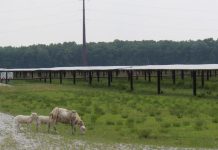Private-sector jobs reach 2.6 million, as state’s unemployment rate falls to 4.7 percent
press release
Indianapolis
Indiana’s unemployment rate fell again in July, to 4.7 percent, as the number of people with private-sector jobs in the state climbed to a historic high.
Total private employment in Indiana has swelled to 2,614,800, the state Department of Workforce Development said Friday. That’s more than 2,000 jobs above the former all-time peak set in March 2000, the department said.
The state has seen a sustained run of hiring over the past 12 months, with private employment growing by 59,800.
The hiring binge has steadily pushed down the jobless rate, which stood at 5.8 percent a year ago and has now fallen to 4.7 percent. The jobless rate hasn’t been that low since November 2007, just before the start of the recession.
Unemployment insurance claims are at their lowest levels since 1999.
Indiana’s unemployment rate is now significantly lower than the national rate of 5.3 percent and the rates in all surrounding states. The next-lowest rate in a neighboring state is Ohio, at 5 percent.
In a statement, Gov. Mike Pence called the record high private sector job number an “achievement (that) belongs to the hardworking people of Indiana and to the businesses large and small, whose hard work and ingenuity achieved this historic milestone.â€
Pence said his administration has “made job creation job one and aimed to get more Hoosiers working than ever before by 2016. … We cut taxes for working families and job creators. We cut government red tape. We signed honestly balanced budgets that hold the line on spending while making significant investments in education, infrastructure and our workforce.â€
Indiana, however, continues to lag in wages and economic growth.
Indiana’s economic output made some of the smallest gains in the country last year, growing only 0.4 percent. That was among the weakest growth rates among the states and far under the nation’s growth rate of 2.2 percent.
Hourly wages in Indiana also dipped by 0.2 percent last year when adjusted for inflation, while U.S. hourly earnings rose by 1.3 percent. That suggests that while Indiana is creating new jobs, they are relatively low-wage ones.
Median household income in the state remains below its pre-recession level.




